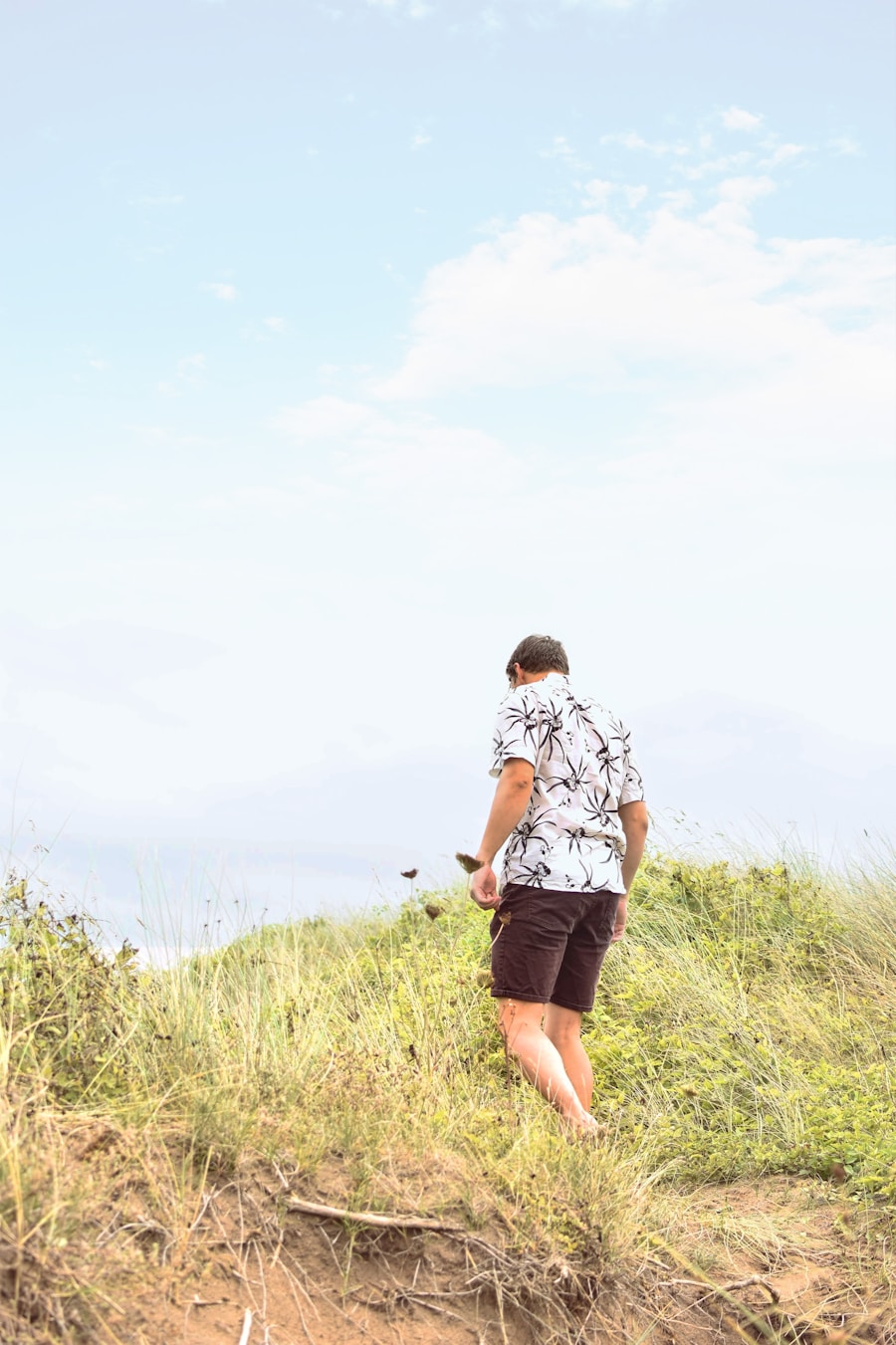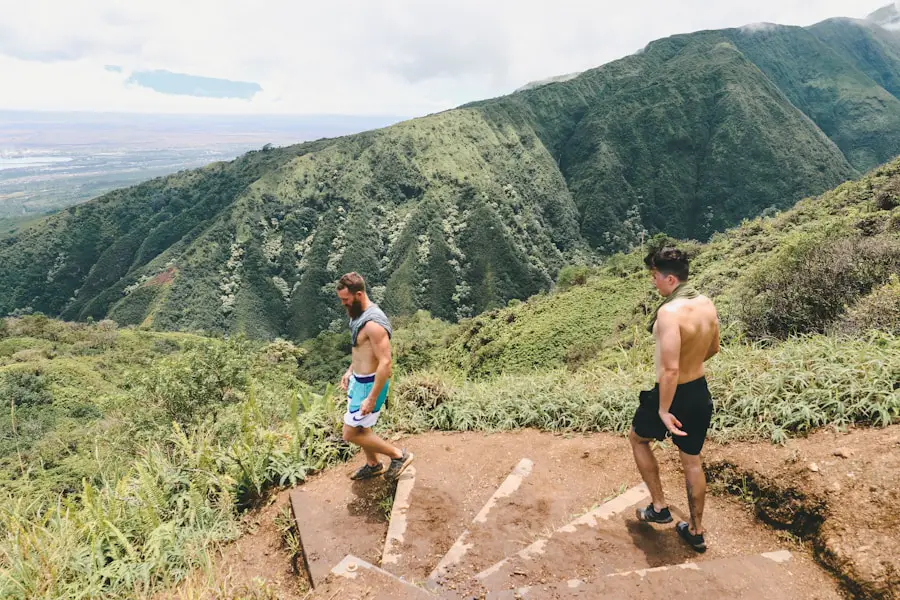Selecting the appropriate footwear is paramount for any outdoor adventure, as it directly impacts comfort, safety, and overall enjoyment. The type of terrain you will encounter plays a significant role in determining the best footwear for your needs. For instance, if you plan to hike on rocky trails or uneven surfaces, a sturdy pair of hiking boots with excellent ankle support and a rugged sole is essential.
These boots are designed to provide stability and protect your feet from sharp rocks and other potential hazards. Brands like Merrell, Salomon, and Vasque offer a variety of options that cater to different foot shapes and preferences, ensuring that you can find a pair that fits well and meets your specific requirements. On the other hand, if your adventure involves lighter trails or walking through flat terrain, trail running shoes may be more suitable.
These shoes are typically lighter and more breathable than traditional hiking boots, allowing for greater agility and speed. However, it’s crucial to ensure that they still provide adequate grip and support. When trying on footwear, consider wearing the socks you plan to use during your hike, as this can affect the fit.
Additionally, pay attention to the break-in period; many hiking boots require some time to mold to your feet. Therefore, it’s advisable to wear them on shorter walks before embarking on a longer trek to avoid blisters and discomfort.
Key Takeaways
- Choose footwear that is appropriate for the terrain and activity, such as hiking boots for rough trails or water shoes for river crossings.
- Dress in layers to accommodate changing weather conditions, including a moisture-wicking base layer, insulating mid-layer, and waterproof outer layer.
- Protect your skin from the sun by wearing a wide-brimmed hat, sunglasses, and sunscreen with a high SPF rating.
- Stay hydrated and energized by bringing plenty of water and snacks, such as trail mix, energy bars, and fruit.
- Pack essential gear in a backpack, including a map, compass, headlamp, multi-tool, and emergency whistle.
Clothing for Variable Weather
When preparing for outdoor activities, dressing appropriately for variable weather conditions is essential to ensure comfort and safety. Layering is a key strategy that allows you to adapt to changing temperatures throughout the day. The base layer should be moisture-wicking, which helps keep sweat away from your skin.
Fabrics such as merino wool or synthetic materials like polyester are excellent choices for this layer. They not only provide warmth but also dry quickly if you become wet from sweat or unexpected rain. The middle layer serves as insulation and can be made from fleece or down materials, depending on the expected temperature.
Fleece is lightweight and breathable, making it ideal for cool but not frigid conditions, while down provides superior warmth in colder climates. The outer layer should be waterproof or water-resistant to protect against rain and wind. Look for jackets with breathable membranes like Gore-Tex that allow moisture from sweat to escape while keeping external moisture out.
Additionally, consider the importance of accessories such as hats, gloves, and scarves, which can significantly enhance your comfort level in unpredictable weather.
Sun Protection

Sun protection is a critical aspect of outdoor activities that is often overlooked until it’s too late. Prolonged exposure to UV rays can lead to sunburn, heat exhaustion, and long-term skin damage. To safeguard against these risks, applying a broad-spectrum sunscreen with an SPF of at least 30 is essential.
It should be applied generously to all exposed skin at least 15 minutes before heading outdoors and reapplied every two hours or immediately after swimming or sweating. Look for water-resistant formulations if you anticipate being in wet conditions. In addition to sunscreen, wearing protective clothing can significantly reduce sun exposure.
Long-sleeved shirts made from lightweight, breathable fabrics can shield your arms while keeping you cool. Many outdoor brands now offer clothing with built-in UV protection ratings (UPF), which indicates how effectively the fabric blocks UV rays. A wide-brimmed hat can also provide shade for your face and neck, while polarized sunglasses protect your eyes from harmful rays and reduce glare from reflective surfaces like water or snow.
Together, these measures create a comprehensive approach to sun safety during outdoor excursions.
Hydration and Snacks
| Hydration and Snacks | Recommendation |
|---|---|
| Water intake | 8 glasses (64 ounces) per day for adults |
| Sports drinks | Recommended for intense exercise lasting longer than 60 minutes |
| Fruits | 2-4 servings per day for a healthy snack option |
| Nuts | 1-2 servings per day for a source of healthy fats and protein |
Maintaining proper hydration is crucial during any outdoor activity, as even mild dehydration can lead to fatigue, decreased performance, and impaired judgment. It’s essential to drink water regularly throughout your hike rather than waiting until you feel thirsty. A general guideline is to consume about half a liter of water per hour of moderate activity in moderate temperatures; however, this may vary based on individual needs and environmental conditions.
Carrying a hydration system such as a CamelBak or water bottles that are easily accessible can encourage regular sipping. In addition to hydration, packing nutritious snacks can help sustain energy levels during your adventure. Opt for lightweight, high-calorie options that are easy to carry and consume on the go.
Trail mix, energy bars, jerky, and dried fruits are excellent choices that provide a balance of carbohydrates, proteins, and fats. For longer hikes, consider packing a more substantial meal such as a sandwich or wraps made with whole-grain bread and protein-rich fillings like turkey or hummus. Eating small amounts frequently can help maintain energy levels without causing discomfort from overeating.
Backpack and Gear Essentials
Choosing the right backpack is fundamental for carrying all your gear comfortably and efficiently during outdoor activities. The size of the backpack should correspond with the length of your trip; day hikes typically require a smaller pack (20-30 liters), while multi-day excursions necessitate larger packs (50-70 liters) that can accommodate additional gear and supplies. Look for features such as padded shoulder straps, a hip belt for weight distribution, and multiple compartments for organization.
In addition to the backpack itself, consider the essential gear you will need for your outing. A reliable multi-tool or knife can be invaluable for various tasks such as food preparation or gear repairs. A headlamp or flashlight is crucial for navigating in low-light conditions; ensure you have extra batteries on hand as well.
A lightweight tarp or emergency blanket can provide shelter in unexpected weather changes or serve as a ground cover during breaks. Additionally, packing a compact stove or portable cooking system can enhance your experience by allowing you to prepare warm meals in the wilderness.
Navigation Tools

Navigating through unfamiliar terrain requires reliable tools to ensure you stay on track and reach your destination safely. While many hikers rely on GPS devices or smartphone apps for navigation, it’s wise to have traditional tools as backups in case of technology failure or dead batteries. A detailed topographic map of the area you plan to explore is essential; it provides valuable information about elevation changes, trails, water sources, and potential hazards.
A compass is another indispensable navigation tool that can help orient you when using a map. Understanding how to read a map and use a compass effectively is a skill that every outdoor enthusiast should develop. Familiarize yourself with basic navigation techniques such as triangulation and following bearings before heading out into the wilderness.
Additionally, consider investing in a GPS device designed for outdoor use; these devices often come equipped with features like waypoint marking and route tracking that can enhance your navigation experience.
First Aid Kit
A well-stocked first aid kit is an essential component of any outdoor adventure, as injuries can occur unexpectedly regardless of preparation levels. When assembling your first aid kit, consider including items such as adhesive bandages in various sizes for minor cuts and scrapes, antiseptic wipes for cleaning wounds, gauze pads for larger injuries, and medical tape for securing dressings. Additionally, include pain relievers like ibuprofen or acetaminophen for managing discomfort.
Beyond basic supplies, consider adding specialized items based on your specific activities or health needs. For instance, if you are prone to allergies or insect bites, antihistamines and hydrocortisone cream can be beneficial. If you’re venturing into remote areas where access to medical help may be limited, including items like splints for fractures or an emergency blanket can be lifesaving.
Regularly check your first aid kit before each trip to ensure that supplies are stocked and medications are not expired.
Leave No Trace Principles
Adhering to Leave No Trace principles is vital for preserving the natural environment while enjoying outdoor activities. These principles promote responsible recreation by minimizing human impact on ecosystems and wildlife habitats. One of the core tenets is to plan ahead and prepare; this includes researching the area you will visit to understand its regulations and guidelines regarding camping locations and waste disposal.
Another important principle is to travel and camp on durable surfaces such as established trails and campsites to prevent soil erosion and vegetation damage. When it comes to waste disposal, it’s crucial to pack out what you pack in; this includes not only trash but also leftover food scraps that could attract wildlife or disrupt local ecosystems. Additionally, respecting wildlife by observing animals from a distance without feeding them helps maintain their natural behaviors and habitats.
By following these principles, outdoor enthusiasts contribute to the preservation of natural spaces for future generations while enjoying their adventures responsibly.
If you are planning a trip to Hawaii, it is important to know the best time to visit. According to a complete guide on the best time to travel to Hawaii, the optimal time to visit is during the shoulder seasons of spring (April-May) and fall (September-October) when the weather is pleasant and the crowds are smaller. This article provides valuable information on when to plan your trip to Hawaii to make the most of your experience.
FAQs
What should I wear when hiking in Hawaii?
When hiking in Hawaii, it’s important to wear lightweight, moisture-wicking clothing that provides sun protection. This includes a breathable shirt, quick-drying shorts or pants, and a wide-brimmed hat.
What type of footwear is best for hiking in Hawaii?
For hiking in Hawaii, it’s recommended to wear sturdy, closed-toe hiking shoes or boots with good traction. Sandals or flip-flops are not suitable for most hiking trails in Hawaii.
Should I bring a rain jacket when hiking in Hawaii?
Yes, it’s a good idea to bring a lightweight, waterproof rain jacket when hiking in Hawaii, as the weather can be unpredictable and rain showers are common, especially in the rainforest areas.
What accessories should I bring when hiking in Hawaii?
Essential accessories for hiking in Hawaii include a backpack, sunscreen, sunglasses, a water bottle, insect repellent, and a trail map or GPS device. It’s also a good idea to bring a first aid kit and a whistle for safety.
Are there any clothing items I should avoid wearing when hiking in Hawaii?
Avoid wearing cotton clothing when hiking in Hawaii, as it retains moisture and can lead to discomfort and chafing. Instead, opt for moisture-wicking, quick-drying fabrics that will keep you comfortable during your hike.
